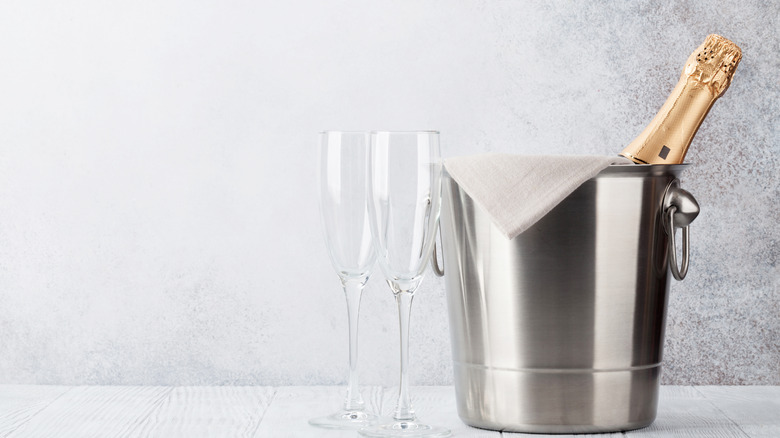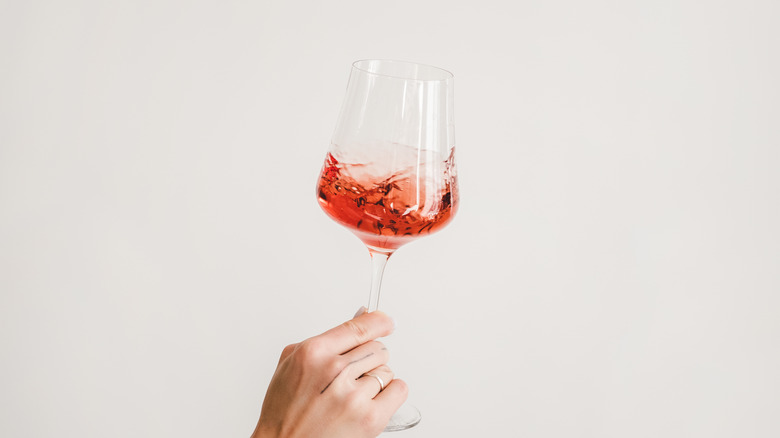Why Acidic Wines Are Often Better Chilled
Crisp, tart, crunchy, mouthwatering, zesty, electric — these are just some of the ways to describe acidity in wine. While all wines are located on the acidic side of the pH spectrum, Wine Folly explains that the varietal, climate, growing season, and even the winemaking process can influence the degree of sourness we taste in our wine glass. How we perceive that acidity (and the overall tastiness of a wine!) is based on its serving temperature. Although you may already be aware that acidic-driven wines like a Sauvignon Blanc or Grenache taste better with a light chill, the real question is, why?
Acidity does many things for wine, namely providing balance and structure, which can contribute to ageability and offer vast potential for food pairings. The way to determine the intensity of acidity is to consider how much a wine makes your mouth water. That said, Good Pair Days outlines that wines with high acidity feel sharp and tart, whereas wines with low acidity feel flabbier and rounder on the tongue.
Generally speaking, red wines tend to have lower acidity than white wines. Usual Wines reports that light-bodied whites and sparkling wines like riesling or Champagne are the most acidic, followed by medium-bodied whites like Chenin blanc, and then full-bodied whites like Chardonnay. Light-bodied reds like Pinot Noir also boast a higher acidity. Unsurprisingly, all of these wines are typically served at cooler temperatures. But what exactly makes high-acid wines taste better at cooler temperatures?
Cooler temperatures highlight the freshness of acid-forward wines
Depending on the type of wine, the serving temperature can range a fair bit. You might have noticed that a full-bodied Shiraz shines at room temperature, but a warm Albariño lacks zestiness and appears dull. Conversely, a light-bodied Fiano tastes sharp and clean when chilled, but a high-tannin and high-alcohol wine like Cabernet Sauvignon can taste astringent and metallic (via America's Test Kitchen). This sensation is a direct result of different acidity levels.
Acidity is best showcased at lower temperatures. According to Wine Spectator, cooler temperatures boost a wine's crispness (acidity) simply because the cold will mask sweetness and alcohol. Since high-acid wines are meant to be refreshing (hence why white wines are the preferred drink during sweltering summers), accentuating this element through chilling doubles its brightness and even subtle aromatics. Just don't let wines get too cold, or flavor and texture can be compromised, notes Punch.
When it comes to proper serving temperatures, light-bodied reds like Beaujolais should be slightly chilled at around 55 F, whereas white wines and bubbly can stand to be kept a bit colder between 40 F and 50 F, depending on the style and weight of the wine. The more you know!

